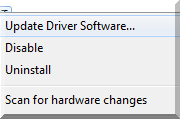How To Transfer Xp To Windows 8

When it comes to adopting new operating systems and applications, common practice amongst system administrators is to filibuster adoption until the release of the outset service pack. Admins found plenty of reasons to put off moving from Windows XP to Windows Vista, and then to Windows 7: The new operating systems demanded more capable hardware, the user interface changes required user training, and there were compatibility issues with legacy hardware and applications.
These days, information technology'due south becoming difficult to find device drivers and applications compatible with Windows XP. More importantly, Microsoft has ended mainstream support for Windows XP, and extended support ends in 2014. New PCs come with Windows 7 by default, so admins must support both operating systems anyway. And with Microsoft widely expected to ship Windows eight in October, can your business concern afford to exist two or three Os generations backside? Unless y'all intend to set aside the first-service-pack rule, it'due south fourth dimension to bite the bullet and move forward.
Server admins are even more bourgeois. In this example, Windows Server 2008 R2 requires 64-bit hardware, and the interface is just different enough to make them nervous. The latest server applications, however, are compatible only with the newer operating system. Microsoft ended mainstream support for Windows 2003 in 2010, and extended support ends in 2015.
Here are the acme vi decisions you lot'll demand to brand before embarking on a migration:
1. Should you install the 32-chip version or the 64-bit version?
At the desktop level, there are few advantages to installing the 64-bit version of Windows 7. The biggest reason to stick with the 32-bit version is that you might take difficulty finding 64-flake drivers for legacy hardware. And some applications don't function well in a 64-bit surround. Unless yous're positive y'all won't need to support legacy hardware, or if you take specific needs that can be filled simply past a 64-bit OS (addressing more 3GB of RAM, for example), you should gear up most desktops with the 32-bit OS.
There is no 32-bit version of Windows 2008 R2. You can run 32-flake applications, just 32-bit support is not installed by default
2. Tin you find compatible device drivers?

As nosotros've already mentioned, y'all might have difficulty finding Windows 7 drivers for legacy hardware, ranging from old printers and scanners to specialized tools such as point–of-sale devices that rely on legacy serial ports. In fact, any new PCs you lot acquire probably won't even exist outfitted with parallel or serial ports. Make a list of these devices and determine whether you'll supplant them or retain some Windows XP computers to keep running them.
three. Which applications will need upgrades?
You can run Office 2003 on Windows 7, but no i would recommend running Part 2010 on Windows XP. Make a list of the applications that will demand to be updated and think that users will need grooming on both the new operating organisation and the new applications.
On the server side, Exchange 2003 or 2007 will run on Windows Server 2003, but Commutation 2010 requires Windows 2008.The same is truthful for the latest versions of SharePoint, SQL Server, and most other server applications. To reduce the bear upon on the enterprise, you might want to install new servers forth with the new server applications, then migrate users and their data from the old server to the new.
4. Should yous upgrade in place, or commencement fresh?
When upgrading desktop systems, y'all have two choices: Install the new OS in an existing system, or start fresh with new hardware. Windows 7'due south system requirements are beyond the capabilities of most PCs that came with Windows XP installed, so you lot might need to beef up the hardware to upgrade in place. The same is true of servers put in service when Windows Server 2003 was new.
Upgrading in place enables you to transfer user settings, application settings, and more from the old hardware to the new using the Windows migration tool or aftermarket tools. Most applications will have to be reinstalled, and you'll want to run Microsoft'due south Windows 7 compatibility tester to determine if any of the old applications will take problems running on the new Os.
five. Is virtual desktop infrastructure a viable alternative?

Y'all tin avoid acquiring new desktop hardware by deploying virtual desktop infrastructure (VDI). Fix upwards a server awarding that runs virtual iterations of both Windows vii and Windows XP desktops, and your users will use their existing Windows XP machines to access these environments. This will help them transition to Windows 7 while ensuring continued access to their familiar Windows XP desktops and legacy applications. VDI will require server and networking infrastructure that will likely kickoff the savings realized by retaining your old desktop hardware. In the long run, withal, VDI will simplify desktop direction, and your users will experience an easier transition.
6. Should you invest in migration tools?
Migration tools can ease the hurting of a mass upgrade past transferring operating system settings, awarding settings, and even some applications and drivers from old systems to new ones. Users can spend dozens of hours setting up their applications simply the way they like, updating dictionaries in word processors; recreating macros, templates, and forms; and so on. The cost of such tools could be get-go by fugitive such productivity loss.
Source: https://www.pcworld.com/article/469340/how_to_migrate_from_windows_xp_to_7_windows_server_2003_to_2008_r2.html
Posted by: hancockhandep84.blogspot.com

0 Response to "How To Transfer Xp To Windows 8"
Post a Comment